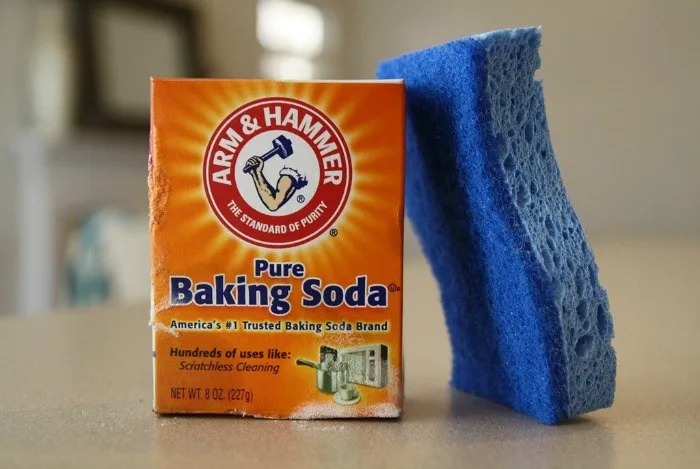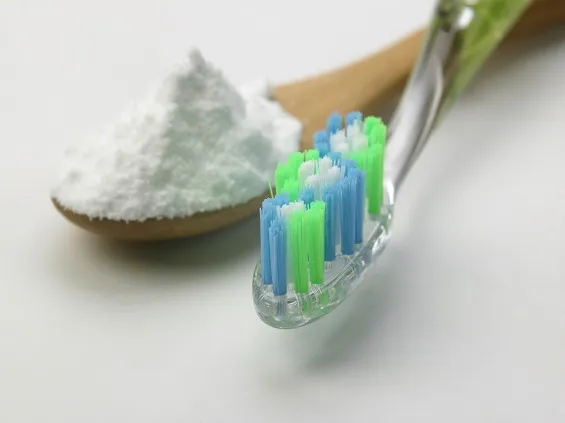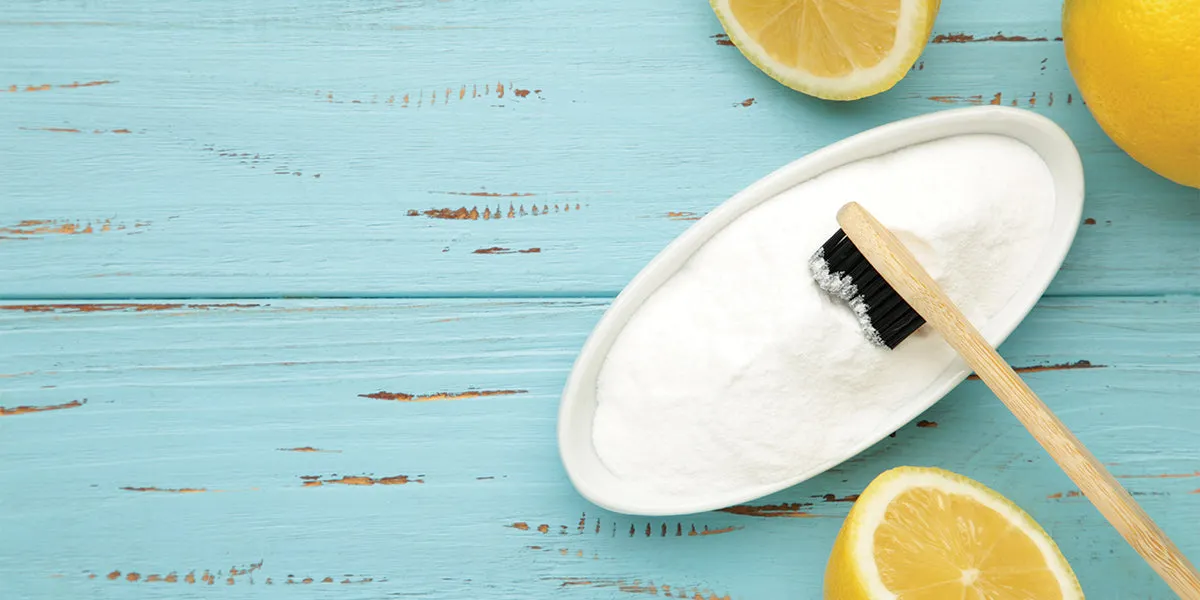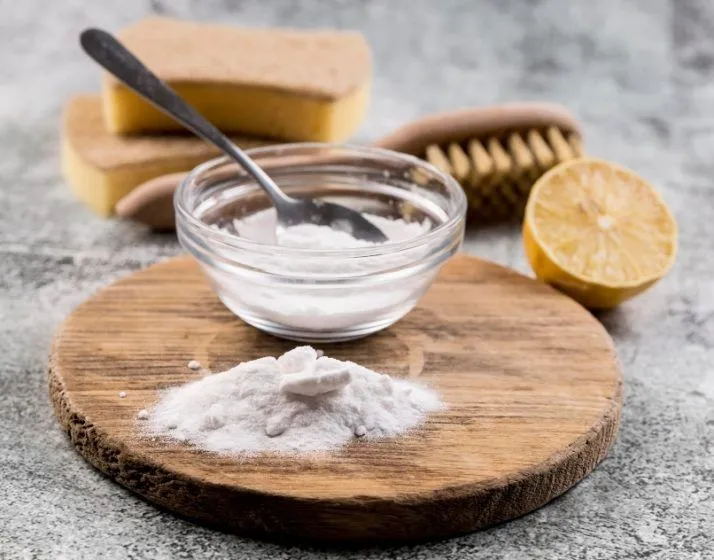Understanding Baking Soda’s Teeth Whitening Power
The quest for a brighter, whiter smile has led many to explore various home remedies, and one of the most popular is baking soda. Its accessibility and affordability make it an attractive option for those seeking to enhance their dental aesthetics. But how effective is baking soda for teeth whitening, and what are the underlying principles? This section dives into the science behind baking soda’s whitening capabilities, setting the stage for a comprehensive exploration of its use as a home remedy. Understanding these core concepts will empower you to make informed decisions about your oral care routine. Moreover, it’s crucial to approach this topic with a blend of optimism and realistic expectations.
How Baking Soda Whitens Teeth
Baking soda, also known as sodium bicarbonate, works primarily through its mild abrasive properties. When applied to the teeth, it helps to scrub away surface stains caused by foods, drinks (like coffee and tea), and tobacco. This abrasive action can remove the build-up of these stains, making the teeth appear whiter. It is also a mild alkaline, which can help neutralize acids in the mouth. By reducing acidity, baking soda can create an environment less conducive to the erosion of enamel. However, it’s important to understand that baking soda does not chemically bleach the teeth like professional whitening treatments that use hydrogen peroxide. Instead, it relies on mechanical action to remove stains.
The Role of Abrasives

Abrasives are crucial in this process. They physically remove the staining agents from the tooth’s surface. Baking soda’s particles are small and slightly abrasive, making it effective at gently scrubbing away stains without causing significant damage when used properly. The key is to use it sparingly and with gentle brushing techniques. Over-brushing or using excessive force can wear down the enamel, the outer protective layer of the tooth. This is why moderation and correct usage are paramount. The goal is to remove the stains without harming the underlying tooth structure. Careful technique ensures that the whitening effect is achieved safely and sustainably.
5 Baking Soda Teeth Whitening Home Remedies
Here are five popular home remedies that incorporate baking soda for teeth whitening. Remember to always use these remedies with caution and consult your dentist if you have any concerns. These recipes offer varied approaches to harnessing baking soda’s whitening potential, each with its unique method of application.
Baking Soda and Water Paste
This is the simplest and most straightforward method. Combining baking soda with water creates a paste that can be applied directly to your teeth. The simplicity of this approach makes it a convenient option for daily use. The effectiveness depends on the concentration and how consistently it is applied. It provides a direct and uncomplicated way to utilize the abrasive properties of baking soda for stain removal. Remember, the consistency should be carefully managed to ensure it is not too abrasive, which could damage your enamel.
How to Prepare the Paste

To prepare this paste, mix a small amount of baking soda (about a teaspoon) with enough water to form a paste. The paste should be thick enough to stay on your toothbrush but not too gritty. Experiment with the water amount until you achieve the desired consistency. This simple preparation allows for easy customization and ensures that you can make the paste to your preference. Avoid adding too much water to prevent it from becoming too runny, which would reduce its effectiveness. A well-prepared paste is crucial for optimal performance.
Application and Usage
Apply the paste to your toothbrush and gently brush your teeth, using circular motions. Avoid brushing too hard, as this can erode enamel. Brush for about two minutes, then rinse thoroughly with water. This simple application method is key to maximizing effectiveness while minimizing potential harm. Ensure that all surfaces of your teeth are covered for consistent results. After brushing, rinse your mouth carefully to ensure no baking soda remains. Regular use is vital for optimal results. Consistency, paired with gentle brushing, ensures effective stain removal.
Baking Soda and Lemon Juice
This combination has been used for its perceived whitening benefits, leveraging the citric acid in lemon juice. However, it is crucial to exercise extreme caution due to the acidity of lemon juice. The citric acid can erode enamel if used too frequently or in high concentrations. This remedy can be effective, but potential risks necessitate careful consideration before incorporation into your oral care routine. It’s essential to understand the balance between whitening and protecting your enamel. Therefore, limiting the use is crucial. Using it infrequently helps prevent enamel damage.
Why Lemon Juice?

Lemon juice is believed to contribute to whitening due to its citric acid content, which acts as a natural bleaching agent. However, the high acidity can also be detrimental to tooth enamel. This means that while it may offer some whitening effect, it poses a risk of erosion, making your teeth more susceptible to cavities and sensitivity. The acidity of lemon juice is the double-edged sword. The key is to use the remedy very sparingly and not to make it a regular part of your dental care. The benefits need to be weighed against the risk. Using lemon juice too often increases the risk of damaging enamel.
Preparation and Application
Mix baking soda with a few drops of lemon juice to create a paste. Apply the paste to your teeth and leave it on for a short period, no more than a minute. Then, rinse thoroughly with water. Due to the acidity of the lemon juice, it’s essential to minimize the contact time with your teeth. A brief application can help reduce the potential for enamel erosion. After rinsing, it’s a good practice to brush your teeth with regular toothpaste to help re-mineralize the enamel and remove any residual acid. This combination offers a more potent approach to stain removal, but it’s essential to mitigate the risks associated with lemon juice.
Baking Soda and Hydrogen Peroxide
Hydrogen peroxide is a mild bleaching agent, and when combined with baking soda, the mixture can be more effective in whitening teeth than baking soda alone. However, it’s essential to use the right concentration of hydrogen peroxide and to avoid overuse. This combination capitalizes on the oxidative properties of hydrogen peroxide. This increases the potential for stain removal. The key is to balance effectiveness with safety. Understanding the appropriate use of hydrogen peroxide is crucial to prevent any harm to the tooth enamel and gums. It is a popular choice but requires careful handling.
Benefits of Hydrogen Peroxide

Hydrogen peroxide can penetrate the enamel and break down stains that baking soda alone might not be able to remove. It also has antibacterial properties, which can help with oral hygiene. The combined effect can lead to a more noticeable whitening result. Hydrogen peroxide works at a molecular level, interacting with the staining compounds and reducing their impact on the appearance of the teeth. Using hydrogen peroxide with baking soda leverages this dual action to remove stains. However, it’s critical to consider potential side effects and the correct concentration level for its safe use.
Mixing and Usage Guide
Mix baking soda with hydrogen peroxide to create a paste. You can start with a small amount of hydrogen peroxide, using just enough to create a paste consistency. Apply this paste to your teeth and leave it on for a few minutes. Rinse thoroughly. The mixture should be used cautiously, and it should not be ingested. Careful rinsing is essential to eliminate any lingering hydrogen peroxide. If you experience sensitivity or irritation, discontinue use immediately. Consulting with your dentist prior to using this remedy can offer personalized guidance.
Baking Soda and Coconut Oil
Coconut oil has gained popularity in oral health due to its potential anti-inflammatory and antibacterial properties. When combined with baking soda, the resulting mixture is used as a milder abrasive and can also contribute to overall oral health. Coconut oil’s ability to reduce inflammation can aid in soothing the gums, while baking soda focuses on stain removal. This remedy offers a gentler approach to teeth whitening, combining the properties of both ingredients. It’s especially helpful for those who may have sensitive teeth or gums.
Coconut Oil’s Benefits

Coconut oil can help reduce bacteria in the mouth, contributing to fresher breath and a cleaner oral environment. It has also been linked to reducing plaque buildup. This combination aims to not just whiten but also to promote a healthier mouth. Coconut oil can enhance the effectiveness of the baking soda. The synergistic effect of combining these two ingredients can provide a more holistic oral care experience. The emphasis is on promoting overall oral health while offering a whitening effect.
Creating and Using the Mixture
Mix baking soda with coconut oil to create a paste. You can warm the coconut oil slightly to make it easier to mix. Apply the paste to your teeth and brush gently. Rinse with water. The consistency of the paste is crucial, as the coconut oil adds a smoother texture, potentially making it less abrasive than the water and baking soda paste. The gentler brushing action is especially important. This combination is a good option for people who have more sensitive gums or teeth. The gentle approach can effectively remove stains with reduced risk of irritation.
Baking Soda and Strawberry
Strawberries contain malic acid, which is a natural teeth whitener. Combining mashed strawberries with baking soda creates a mixture that is believed to provide whitening benefits. This approach is popular because it is perceived to be a natural and less harsh method. It offers an alternative for those seeking a gentle whitening experience. The combination leverages the fruit’s natural properties to improve the brightness of your smile.
The Role of Malic Acid

Malic acid is a natural compound that can help remove surface stains. Strawberries have a moderate amount of malic acid, making them a suitable ingredient for this home remedy. This acid aids in breaking down the stains, promoting a brighter appearance. The addition of baking soda acts as a mild abrasive, further assisting in the stain removal process. This combination is gentle yet effective, offering a natural solution for those looking to enhance their smile. Its effectiveness comes from the combined action of both ingredients.
Preparation and Application
Mash a few strawberries and mix them with baking soda to create a paste. Apply this mixture to your teeth and let it sit for a few minutes. Rinse your mouth thoroughly. This method offers a refreshing and flavorful approach to teeth whitening. The consistency of the paste can vary depending on the strawberries’ ripeness. The mixture should be used with moderation, due to the potential for the fruit’s acidity to impact the enamel. Consistent rinsing and following up with regular toothpaste are highly recommended after using the strawberry and baking soda paste.
Important Considerations and Safety
While baking soda can be effective for teeth whitening, it’s essential to approach its use with caution. Overuse or improper application can lead to potential risks. This section highlights the potential downsides and provides guidelines for safe and effective usage. Understanding these factors helps ensure that you achieve a brighter smile safely. Careful consideration and adherence to the guidelines can prevent potential issues. Awareness of the risks is the first step towards using baking soda safely.
Potential Risks and Side Effects

One of the main risks is enamel erosion, which can make your teeth more sensitive and susceptible to cavities. Excessive use of baking soda’s abrasive properties can wear down the enamel. The repeated scrubbing can damage the protective outer layer of the teeth, which is irreversible. Side effects can include increased tooth sensitivity and gum irritation. If you experience any of these symptoms, discontinue use immediately and consult with your dentist. Awareness of potential side effects is crucial to protect your oral health. Paying attention to your teeth’s response to the remedy is extremely important.
Frequency and Usage Guidelines
It is recommended to use baking soda as a teeth whitening remedy no more than a few times per week. Daily use can significantly increase the risk of enamel erosion. Always brush gently, avoiding excessive force. Monitor your teeth for any signs of sensitivity or discomfort. If you notice increased sensitivity or any other issues, stop using the remedy and consult your dentist. Proper usage and frequency are critical to minimize risks and maximize the whitening benefits. Consistency is key, but moderation and careful attention to your teeth’s reactions are extremely important.
When to Consult a Dentist
If you have any concerns about using baking soda for teeth whitening, or if you experience any negative side effects, consult your dentist. They can assess the condition of your teeth and gums and provide personalized recommendations. A dentist can provide professional advice. Professional dental cleaning and whitening treatments are also available. Regular dental check-ups are essential for maintaining good oral health and addressing any issues promptly. Your dentist is your best resource for ensuring a healthy, bright smile. Professional guidance ensures that you choose the most appropriate and safest methods for your oral health.
